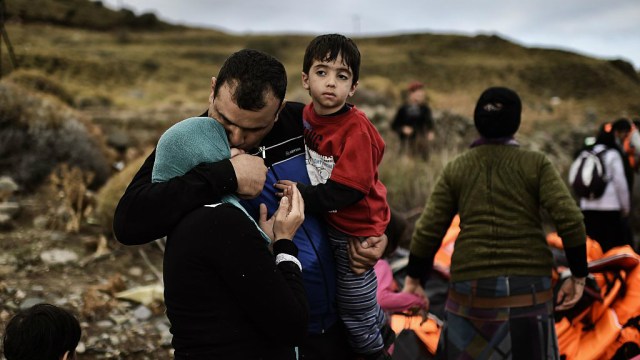Can You Draw Your Way to Zen?

Everyone wants some peace of mind. In these chaotic times, carving out some Zen for yourself seems not just a luxury, but also a vital necessity. Alas, the idea of meditation for most people — sitting still, focusing on breathing, shutting out the world — seems too difficult, too eccentric, too boring, or too all of the above. Wendy Ann Greenhalgh’s Mindfulness & the Art of Drawing: A Creative Path to Awareness offers picking up a pencil and drawing as an alternative that everyone can do. If doodling through a meeting’s ever brought you a fleeting moment of Zen, then mindfulness drawing might bring you closer to not just an understanding of yourself, but also an understanding of the power of art.

“Everyone can draw,” Greenhalgh (shown above) writes in her introduction. “Far from being a rare gift, only possessed by the ‘artists’ among us, drawing can be as natural and instinctive to us as breathing — if we let it.” Greenhalgh’s mindfulness drawing program, if followed faithfully, “has the power to effortlessly lead us into a deeper relationship with ourselves and the world around us.” Drawing in this way eliminates the distance and disconnect we can feel with the world and ourselves. Drawing compels us to see deeply, which leads us to (perhaps for the first time) build a real relationship with parts of ourselves and parts of our world we’ve been too busy (or fearful) to look deeply and directly at.
If that sounds too New Age-y for you, do not fear. Greenhalgh’s writing style is as simple, clear, and honestly direct as the simple line drawings (such as the cover image at the top of this post) that accompany the text. One drawback of previous books on the subject, such as Frederick Franck’s Zen of Seeing: Seeing/Drawing as Meditation, was the artist’s own work, which hoped to inspire, but had the unintentional effect of discouraging the reader by setting an impossible standard for the amateur. Greenhalgh, herself a professional artist, resists the urge to show off and leaves the image-making all up to you. Also, if you’ve never done anything more than doodle or consider buying a yoga mat to meditate on, Greenhalgh provides step-by-step instructions to get you simultaneously drawing and focusing on mindfulness.

“All children are artists,” Greenhalgh quotes Pablo Picasso (shown above) saying. “The problem is how to remain an artist once he grows up.” Most people pick up a crayon, pencil, etc., as a child and start drawing naturally, making marks just for the pleasure of it. When we grow up and develop our “inner critic,” however, most of us literally talk ourselves out of being creative. Greenhalgh coaches you to reclaim that innocent, child-like “beginner’s mind” to combat the critical mind that cripples creativity and self-esteem.
Keeping the jargon to a minimum, Greenhalgh calls this liberating transition a move from “thinking-mind” to “being-mind.” Once we agree with her that “thoughts are simply habits” and that we can draw our way to new, more positive habits of mind and being, we can tap into our “inner Picasso” not to make million-dollar masterpieces, but rather to make connections with our creative selves. As Greenhalgh puns, we are “drawn into” drawing by the time-defying effects of flow, the feeling of being “in the zone” where the most joyful moments of life await us.
Part of connecting with your self is connecting with the world around you. Once Greenhalgh gets you drawing again, she guides you through the different genres of drawing, making distinctions with how each genre adds a new dimension to your mindfulness. Drawing a still life, for example, “we draw closer” (that pun, again) “and come into relationship with the thing we are drawing. The Philadelphia Museum of Art’s recent exhibition Audubon to Warhol: The Art of American Still Life [which I wrote about here] emphasized this idea of still life as dialogue between the animate and inanimate.

Just as Matthew B. Crawford proposes the spiritual benefits of reclaiming a hands-on relationship with the physical world in Shop Class as Soulcraft, Greenhalgh proposes walking, seeing, and drawing as the sketchbook for the searching soul. Drawing landscapes (such as Van Gogh’s shown above) literally helps us make sense of the world. “You discover how confounding the world is when you try to draw it,” Greenhalgh quotes artist Shaun Tan. “You don’t have to travel to encounter weirdness. You wake up to it.” When the world gets too weird, mindfulness drawing compels us to slow down, reorient ourselves, and literally “see the big picture” without drowning in the details. Rather than drown in detail, we appreciate the details anew. Perhaps Van Gogh’s compulsive drive to draw thousands and thousands of drawings in his distinctive style reflects this ability of mindfulness drawing to give solace to even the most troubled psyche.

Like landscape, the human innerscape offers possibilities for mindfulness drawing. Portraits of self and others, Greenhalgh believes, “offer the opportunity to develop our capacity for loving-kindness.” Drawing thus draws upon the natural empathy within us, both for others and ourselves. “I would wish my portraits to be of the people,” she quotes Lucian Freud saying, “not like them.” Certainly Freud (grandson of Sigmund Freud) drew a more psychologically than photographically accurate portrait of his father (shown above) to be “of” him more than “like” him. Perhaps most importantly, Greenhalgh argues, “When we draw portraits of others mindfully, barriers between the self and the other are broken down.” The image of the whole world sitting down and sketching their way to world peace sounds a little crazy, but it might be just crazy enough to work.

In the same spirit of openness and discovery, Wendy Ann Greenhalgh’s Mindfulness & the Art of Drawing: A Creative Path to Awareness might not just be the key to appreciating world and self, but also art itself. If you look at a work such as Egon Schiele’s 1910 Self-Portrait (shown above) and find it impenetrable, then mindfulness drawing might help you scratch the surface by putting yourself in the shoes of a creative artist. Amsterdam’s Rijksmuseum recently began a #Startdrawing program that asks visitors to sketch rather than photograph the art in this spirit of mindfulness drawing. True art appreciation takes time and effort. Greenhalgh’s mindfulness drawing turns all of life into an art museum for us to see and appreciate through time and effort. If you’re looking for peace of mind, it might just be a doodle — albeit a focused, mindful doodle — away.





